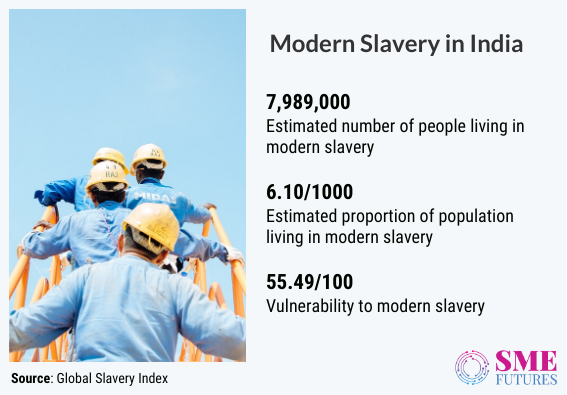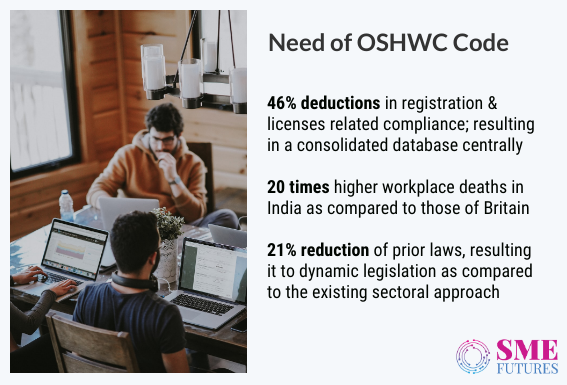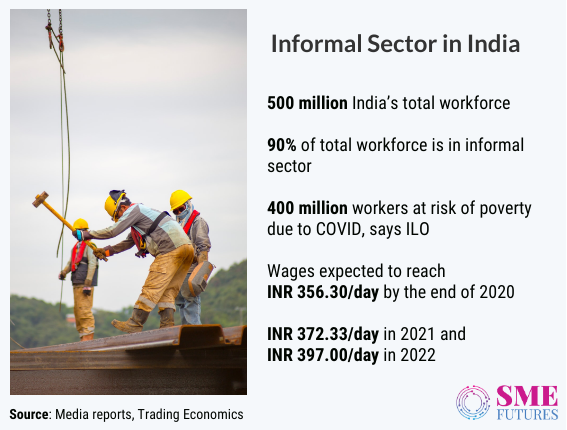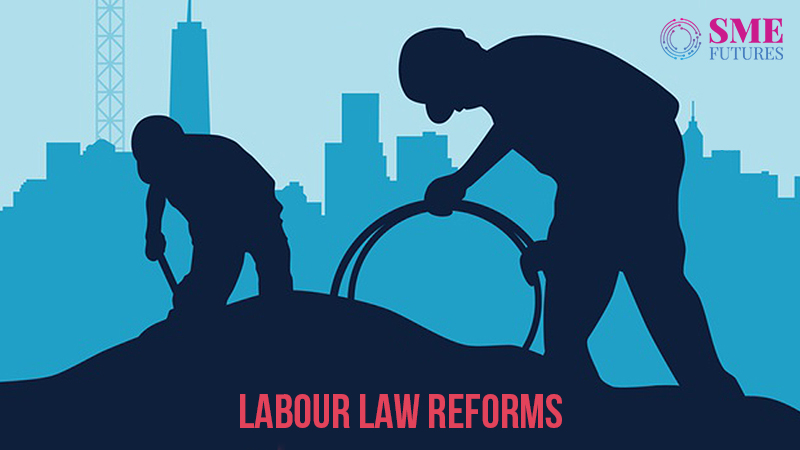Labour laws are meant to protect the rights of workers and their entitlements in their organisations. However, labour legislation in India is complex, because these are a part of the concurrent list. This implies that both central and state governments are competent to form legislation on the issues of labourers.
Unfortunately, despite having a composite network of 44 labour laws and over 100 state laws, India falls behind other countries when it comes to protecting labour laws. The recent ranking of Oxfam’s Commitment to Reducing Inequality Index (CRII) tells us that India slipped from rank 141 to 151 (out of 158) with weak labour rights and high incidents of vulnerable employment.
Exposing the lacuna, the pandemic has laid bare the brutal reality of basic labour rights in India. This is evident from tonnes of layoffs of employees without compensation. The report also recommended that there is an urgent need for governments to commit themselves to the cause of reducing inequality.
The suggestion has come at a time when the Indian government is in the process of amalgamating 44 labour laws under four codes. These four codes are based on Wages, Industrial Relations, Social Security and Occupational Safety, and Health and Working Conditions (OSHWC).
It was during 2015 when the government tried to bring amendments in labour laws for the first time but failed due to denial of opposition from various fronts. But in its second term, the government seems more resolute to pass these amendments. Viewing this, codes on wages bill 2019 and the code on OSHWC was introduced in Lok Sabha last year.
The former code was passed in August last year, but the latter code was introduced again in parliament during September this year. This includes modifications along with the Industrial Relations code 2020 and Social Security code 2020. The labour ministry is focusing on the early implementation of new labour codes in this fiscal year and wants to finalize it as soon as possible.
According to a media statement of labour secretary Apurva Chandra, rules may be implemented even before that. Considering the intent of the ministry to implement the codes immediately, the new draft rules under the OSHWC code have been put up in the public domain for feedback recently.

Explanation of OSHWC code
The primary objective of the OSHWC code is to merge with 13 existing acts which regulate the health, safety and working conditions of labourers. This includes the Factories Act 1948, the Mines Act 1952 and the Contract labour Act 1970. The code is going to cover all establishments employing at least 10 workers. These include mine, dock and construction workers, workers involved in life threatening activities, journalists, motor transport workers, and sales promotion employees.
It will also include employees engaged by contractors from various sectors. The government has the liberty to exempt any workplace or activity from the code in case of public emergency, disaster or pandemic for up to a year. Further, the state government can exempt new factories from the code for a specific time period to establish and create economic activities and employment.
Establishments coming under the code require registering within 60 days, whereas factories need a license to operate. Even factories involved in activities such as beedi and cigar making must obtain licenses. It also provides the facility of single electronic registration, license, and annual integrated return for an establishment. The code also states primary duties of employers such as to provide risk-free workspace and to conduct free health check-ups for all.

Provision and benefits for workers in OSHWC
The draft contains rules for appointment letter in prescribed format including designation, category of skill, wages, and avenue for achieving higher wages or higher position for every employee of an establishment within three months of coming into force of rules.
Under the rules, safety committees have been made mandatory for every establishment to employ 500 or more workers. It is to provide an opportunity for workers to represent their concern about occupational safety and health matters. According to the draft rules, no employee shall be employed in any establishment unless he has been issued a letter of appointment.
The rules have been made to implement suitable working conditions related to the safety of women employees in every establishment for all types of work before 6 am and beyond 7 pm with their consent. The draft also suggests that for calculating overtime on any day, a fraction of an hour between 15 to 30 minutes shall be counted as 30 minutes. Currently, less than 30 minutes is counted as no overtime.
Reactions of India Inc for reform
This draft is now published for the general public to obtain feedback, suggestions, and objections about it. Vishal Grover, Practice Leader, Retirement Solutions, Aon India claims,
“A delicate balance was needed to meet needs of both employers and employees and provisions in these codes appear to have met that balance.”
According to him, some of the big reforms impacting employers include flexibility to hire fixed-term employees, relaxation in rules around retrenchment, inability of unions to go on strike without giving sixty-day notice to the employer and single licensing norms for contractors.
From an employee’s perspective, commitment to set up social security plans for unorganised, gig, and platform workers is a step in the right direction considering the growth of aggregator platforms. “Overall, the success of codes would depend on how rules are framed and implemented on the ground during the next few months and how organisations adapt to these changes,” he highlighted.
On the other hand, a group of ten labour organisations are opposing the prospective reforms and are asking the government to withdraw the laws. They have termed all codes as anti-worker labour laws with others demands. For this, they did a nationwide protest and strike on November 26th which turned out to be the biggest strike by workers.

Contentious clause of extension of shift hours
According to the new draft code rules of OSHWC, the government wants to increase working hours or spread over-time to 12 hours which earlier was 10.5 hours. However, at the same time draft rules also retain pre-existing 48 hours weekly working hours. The daily working hours are still restricted to 8 hours according to the draft.
The draft rule states, “No worker shall be required or allowed to work in an establishment for more than forty-eight hours in any week. The period of work of a worker shall be so arranged that inclusive of his intervals for rest, shall not spread over for more than twelve hours in a day.”
In case if working hours exceed the 48 hours limit, then there is a provision of overtime. Earlier, states such as UP, Gujarat, Maharashtra implemented 12 hrs and 72 hrs week rule, but it didn’t work well. But if proposed draft rules are passed, then the 12 hrs work shift will become a reality soon in Indian factories.
When asked is it ethical, experts had mixed opinions. RP Yadav, CMD of Genius Consultants says, “The shift from 10 and half hrs to 12 hrs work by an employee for over time is a choice given to them for selecting working hours. An employee has a choice to earn money and a balance with personal life and an opportunity to spend quality time with his or her family. This would create positive dynamics for both employer and employee.”
But others think otherwise. “It is a rule that is not grounded in India’s reality,” says Professor Anil K Sood, Co-founder of Institute of Advanced Studies in Complex Choices (IASCC). He adds,
“We are all aware of the poor state of public transport and living conditions in most Indian cities, it is unfortunate (if not completely unwarranted) that government of India has proposed for 12 hours shifts.”
He further comments, “Adding commuting time to a 12-hour day would mean that an average worker will have no personal or family time. A young worker would not have time to invest in his education or skills. The Indian employers have given up investing in their employees since long ago, as a vast majority of them employ contract labour now.”
In addition to this, a 12-hour workday would put women and older workers at a significant disadvantage. Girish Patwardhan, a labour law expert and Ex-President of the High Court Bar Association, Indore is also not very convinced of these draft rules.
He elaborates, “I don’t think increase in over time is going to make any difference. Firstly, the working hours are going to be the same, which is eight hours. It is clear at least two hours will be given for a break. The question is what employers expect to get done by workers in the remaining time.”
After the government made draft rules public, Anil Malik, an expert in industrial relations and retired HR Professional from Kirloskar Brothers has made a list of suggestions and objections. In agreement with other experts, he also feels that the 12 hours work shift rule is not going to change anything. He adds, “I believe employees such as factory workers, hotel workers, or labourers are already working in long shifts from morning to night. It was not written anywhere on paper. Hence, these rules are not going to change anything.”
Pointing out another important aspect which is neglected in all four codes, he says, “Those who are working from homes are doing more than 14 hours of shift. My son who works for a company sometimes gives 17 hours to his firm. This deeply concerns me.”
In security services, contractors have been formally offering 12-hour shifts for many years. In most of these cases, staff are expected to work six days a week, implying that they are already working for more than 48 hours a week. “I would have expected the government to curtail such practices rather than providing a legal cover to them,” adds Prof Sood.
Journey allowance for migrant workers
At the time when the country is seeing mass exodus of migrant workers, labour code draft rules talk about providing a journey allowance for migrant workers. But it is only meant for workers who have worked for not less than 180 days at a place.
According to professor Sood, it is a good idea to have a provision for travel allowance. However, he also points out that it is very unlikely that the workers will receive this benefit. This particularly cannot be implemented in situations where employment is seasonal, and the worker is not employed for more than 180 days.
Hence, many workers will not be able to avail the allowance. Adding to it, Patwardhan says this rule can create a dilemma for workers if they are in the middle of switching jobs. “The chances are…while a worker may want to leave; they will keep working just to avail the allowance. This can also be the case if they have better employment or jobs elsewhere,” he explains.
Yadav of Genius Consultants said that the ministry could have easily done away with steps. According to him, the concept of travel allowance for migrant workers who complete 180 days will affect migrant workers’ employment.
He further elaborates, “In any case, they get leaves and leave encashment which they might utilise for covering up their travel expenditures. They could have easily done away with this step. One of the key changes is the definition of employer is now not just limited only to factory owner, mine owner, company owner, or property owner, but also, he or she can also be a manager of a start-up. This is a great initiative by our government.”
Migrant workers are mostly employed as informal sector employees and very few are part of a formal employment set up. This change will surely create pressure on employers. Due to increased expenses to afford migrant workers, corporates will now lean or shift towards on-boarding or recruiting local talents.
The draft states, “In the event of change of employer by the inter-state migrant worker during the middle of the employment period and has not availed the journey allowance from his previous employer, then on the basis of a certificate to be given by inter-state migrant worker, the employer where the inter-state migrant worker is now working and the such worker has completed one hundred and eighty days in preceding twelve months including the period spent with the previous employer, then the employer shall give journey allowance.”
According to professor Sood’s assessment, a new employer will be willing to pay an allowance for a period that has not been spent at his or her workplace only if there is labour shortage. “We are not even heading in that direction,” he says.
Further explaining it, he says such a provision is likely to encourage regulatory game playing by employers. Particularly, when we know that the government does not have the necessary infrastructure for dispute resolution and a large part of employment is in the unorganized sector or through contractors.
A study on OSHWC by Sanjog, an NGO and a resource platform which works on labour issues points out a few other gaps in the draft rules. It says that since this code applies to establishments with a minimum of 10 employees, migrant workers in the informal sector with less than 10 employees will lose out on protection. Rules also prohibit child labour below 14 years of age. Hence, children working below 14 years will be neglected on safety and protection.
The draft rule code OSHWC has also skipped the bonded labour Act. According to experts, it talks about contract labour as it blends into both acts. But the Contract Labour Act and Bonded Labour Act are two different things. The labour ministry data shows that practice is still unabated in UP, Bihar, Odisha, Chattisgarh and Karnataka.
The Global Slavery Index estimates that on any given day in 2018, a total of nearly 8 million people were living in modern slavery in India. In terms of the prevalence of modern slavery, there were 6.1 victims for every thousand people.
No increase in wages
In February 2019, Anoop Sathpathi committee submitted a report on minimum wages. It suggested minimum wages to be Rs 375 to Rs 447 depending on the geography of the state. However, the Minimum Wages Act 2019 recommends the minimum wage of a worker to be Rs 178. This seems like a sheer neglect of recommendations of committees, trade unions, 7th pay commission, and even Supreme Court’s ruling recommending a 25 per cent hike in wages.
Today, the labour law codes are being discussed without giving much attention to this prevalent issue. Though certain provisions of the code talk about wages, but these fail to define it concretely. The lack of a specific definition can lead to confusion and further misuse of the provisions.
Professor Sood comments, “There has been no (or extremely low) increase in real wages for most worker groups. This implies that we are recreating conditions that would ensure that an average Indian worker has no chance of breaking away from cycles of poverty and low-income. In a way, we are creating conditions for low-quality of life for a vast majority of Indian workers.”
In 2019, the Indian government had noted that 6.7 per cent of its population is below its official poverty margin. Afterwards, the crisis created due to the pandemic amplified the number of people living below the poverty line. According to the CMIE, the lockdown was daunting on 121 million people including 91 million daily wagers in the informal sector. Over 4 million were jobless in just one month.
Why labour law amendments now?
When these labour code amendments are pondered over closely, it gives rise to many apprehensions. One of the most prominent among them is why these half-hearted amendments are proposed now when there is already a system in place. The provisions in it make it look as if amendments are meant to benefit industry or more elaborately for employers.
As per the ‘Ease of Doing Business’ 2020 report, India had jumped 14 places to the 63rd position in the ease of doing business rankings. India has improved its rank by 79 positions in five years (2014-19). According to a government official, “At present, it is cumbersome to be an entrepreneur due to this vicious web of labour laws which make compliance practically difficult. It is easy to seek employment rather doing your own business and becoming a job creator.”
The codes intend to enable ‘one labour return, one license and one registration’ to smoothen compliance hurdles. An entrepreneur today must maintain eight registrations and four licences to run a business under the existing labour laws. Besides, they must file eight labour returns which include returns for EPFO, ESIC, and Chief Labour Commissioner.
In terms of wages, the code of wages absorbs 12 definitions of wages and streamlines into one to avoid litigation and inefficiency in the implementation of labour laws. The new simplified definition specifies to ‘reduce litigation’ and to ensure a ‘lesser cost of compliance’ for an employer. It clearly appears from the definition that the objective is to give advantages to employers, entrepreneurs and industry and not the protection of labour rights or interests of workers.
Future of reforms
The government, through a series of codes, has tried creating a rule-based system that provides flexibility to employers and is expected to create better employment conditions for workers. For a rule-based system to achieve its objectives, we need a stringent regulatory mechanism and adequate human resources to supervise compliance. But both are not our strengths.
Professor Sood says, “I would, expect the employment conditions to only get worse from workers’ perspective. The provisions like raising of threshold level to 300 workers for retrenchment and doing away the need for having standing orders are expected to enhance employers’ bargaining power. This will thereby reduce the quality of employment.”
India is at a stage of economic development where we need the quality of employment to get better and not worse. The proposed labour reform should consider the fact that an average Indian worker is relatively poor and has no or very limited ability to take risks.
By shifting the risk from employer to employee, we are creating a more disadvantaged working class, as the risk is being parked with people who don’t have the ability to take risks. An average worker may have a higher willingness to take risks, as he or she does not possess much choice. In the wake of the pandemic, it appeared that the government was highly reluctant to provide social security and job assurance to workers even during the pandemic. Hence, more effective implementation of worker-friendly labour laws is need of the hour right now.











